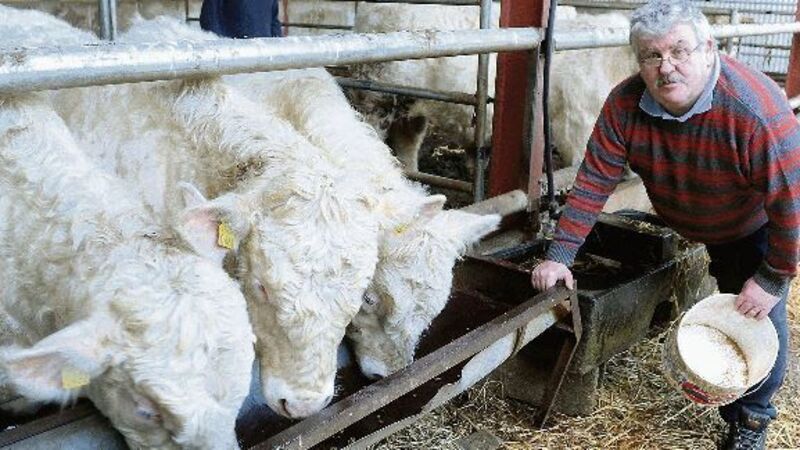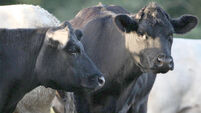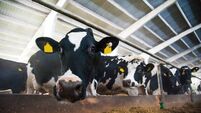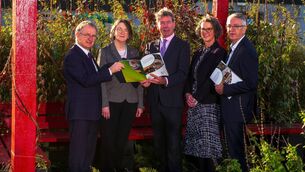Farmers query wisdom of continuing in sucklers

Many suckler farmers are seriously questioning their viability, says Dermot Kelleher, the Irish Cattle and Sheep Farmers Association’s national suckler chairman, and West Cork chairman.
He should know, running a 40-cow herd at Inchigeela in West Cork.
His fears for the future of suckler farming are backed up by statistics from the Irish Cattle Breeding Federation. They have confirmed that 7.4% fewer suckler cows calved this year, up to July, after a year of bad weather led many herd owners to cut back.
They have lost at least €20 per cow, with the ending of the five-year suckler-cow welfare scheme.
High cattle prices this year have helped them weather the setbacks.
However, the market may be turning against them also, with disappointing prices at some of the early autumn weanling sales, which many suckler farmers depend on for earnings. For many, the sale of a weanling doesn’t even cover the cost of keeping it and its mother, leaving them heavily dependent on disadvantaged area payments and single-farm payments for income.
Now that disadvantaged payments have been cut, and payments from REPS are falling due to discontinuation of that scheme, Mr Kelleher says the reality of poor financial returns from beef cows is becoming clear to farmers, who are considering other options.
* ICBF says 7.4% fewer suckler cows calved up to July. Is it true that a lot of farmers are culling or trying to sell sucklers?
>>From speaking with other suckler farmers, I’d say there is significant anecdotal evidence to suggest it is true. It seems to be the case that a number of suckler farmers have decided not to run a bull with their cows this year, and that when the weanlings are reared, the cows will go. Where a suckler cow isn’t paying for herself, it doesn’t make sense to keep her.
However, suckler numbers increased a lot between 2010 and 2012 (980,000 to 1,116,000) so the sector isn’t going to disappear overnight. The unfortunate thing is that it is the best farmers, who have a close eye on costs, who are seriously questioning the viability of suckler farming, and may be the first to leave the industry.
* What are your hopes for the weanling market? Is falling demand for bull beef an important factor?
>>My hope would be that the live export market for weanlings and the demand for bull beef both pick up. The fall in demand for bull beef has definitely had an impact. We will need to see a significant reduction in the bureaucracy surrounding clearing boats for exports, for one thing. ICSA is currently working extremely hard to open up live export opportunities and increase the market options for weanling producers. Ultimately, my hope is that if you produce a weanling and get him to, say, 400kg, you will be paid a price that will make it worthwhile to put the cow back in calf for next year.
* How important are part-time suckler farmers? Are they likely to keep going through thick and thin?
>>The part-time suckler farmer has always played an important role in the Irish beef sector. However, the downturn has created problems for the smaller-scale producers, because the off-farm income simply isn’t there anymore.
The part-time suckler farmer is often the one producing the top-quality weanlings. As they can’t increase numbers, due to marginal land, many of them have focussed on quality.
As for thick and thin, they won’t stay producing something that isn’t paying them.
* The Suckler Cow Welfare Scheme has been replaced by the Beef Data Programme. What do farmers think of it?
>>Every bit of financial support is useful, and the data being gathered is very important. Having said that, it’s not an adequate replacement for the SCWS. To properly support the suckler cow, the money should be streamed through a welfare scheme.
* What incentives would work best to revive confidence among suckler farmers? What is ICSA’s policy on this?
>>The biggest incentive would be to ensure that suckler farmers receive a decent profit margin for their produce. Throwing a few euro at the suckler cow is not the solution to the problems facing the industry. The price of weanlings is the key to the success of the industry.
* Up to €97m of single farm payment could be available as a coupled payment for vulnerable sectors. Should some of that be reserved for suckler farmers?
>>The suckler farmer needs to be supported, but coupled payments aren’t the answer. Financial supports shouldn’t be paid out on a per-head basis, numbers would go up, and quality would go down. Keeping numbers artificially high is ideal for meat factories, but not for farmers. Support for the suckler industry would be best channelled through Pillar 2 payments.
* What is the suckler farmer’s wish list in the Irish implementation of the CAP reform to be decided in the coming months.
>>Pillar 2 should be targeted at low-income sectors like sucklers and sheep. The biggest loss is a worthwhile agri-environment scheme along the lines of REPS. Any new agri-environment scheme must deliver more money than AEOS to farms.









